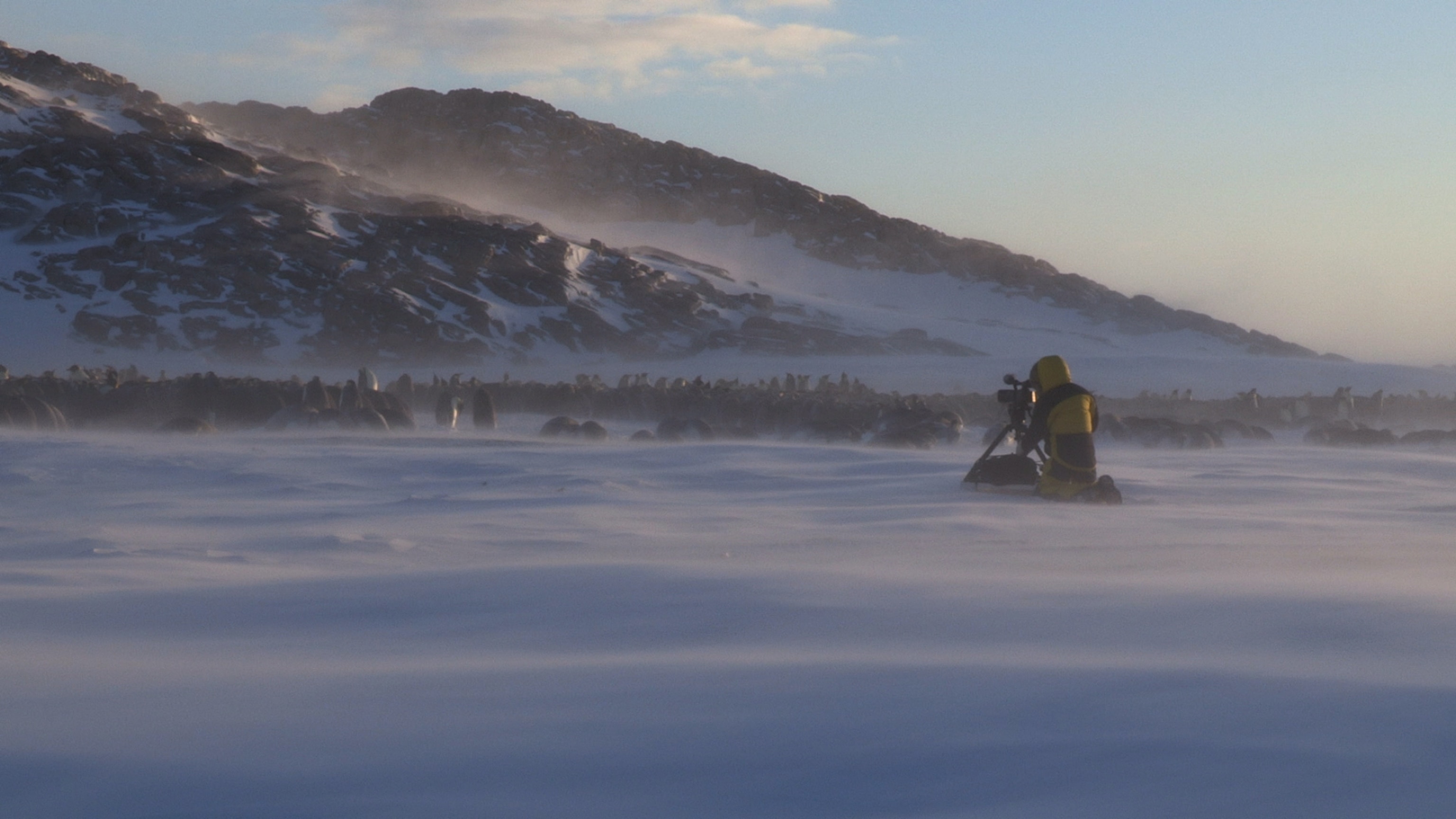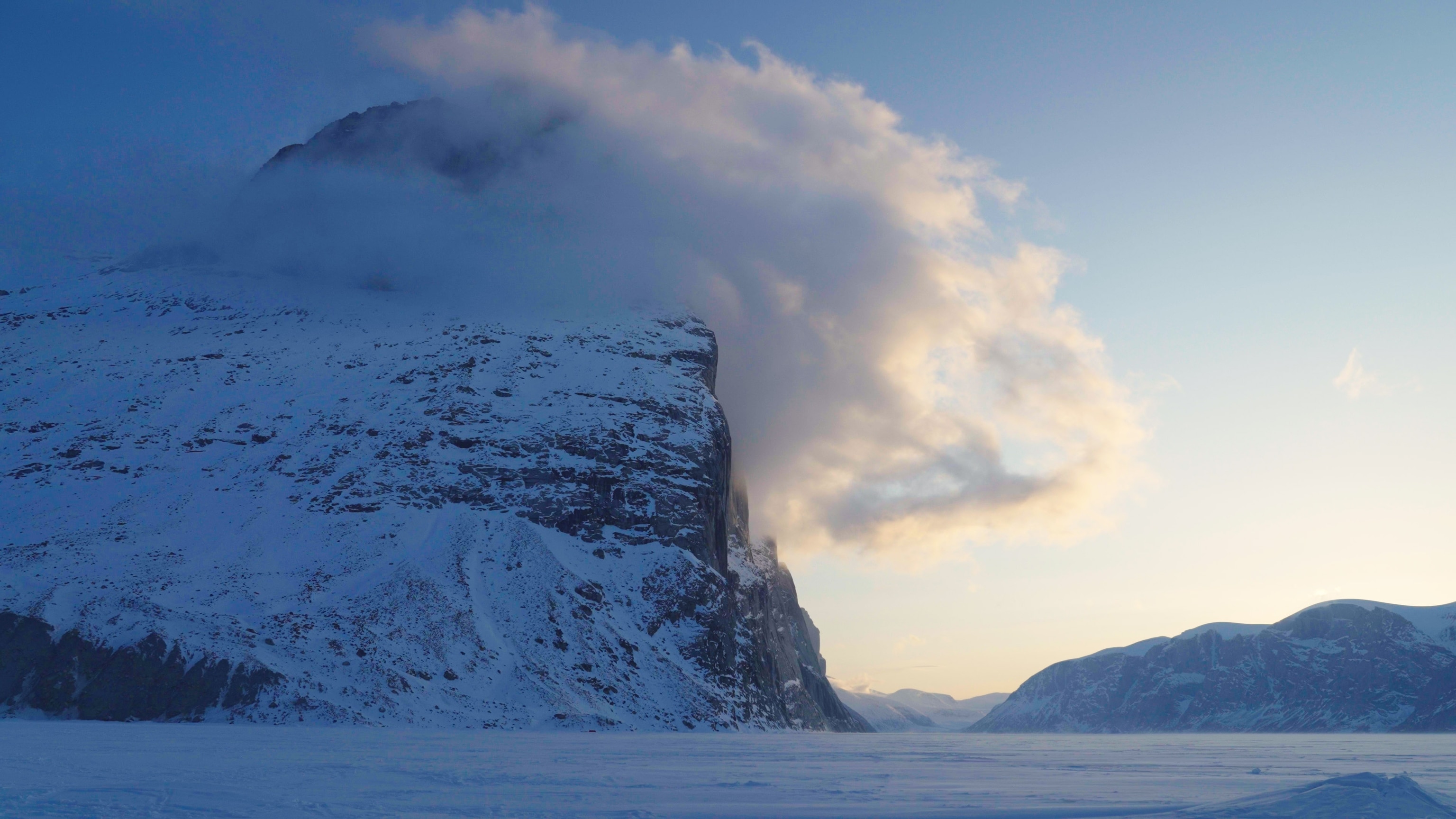Filming with purpose: Technology that takes wildlife cinematography further
Advances in technology are helping filmmakers fulfill their purpose: showing the world’s flora, fauna, and landscapes in more spectacular ways.
In 1911, audiences in London were introduced to the Antarctica landscape at the first screening of Herbert G. Ponting’s pioneering documentary film, With Captain Scott, R.N. to the South Pole. Ponting was a man on a mission, driven by a tremendous sense of purpose: Chosen to film part of this historic expedition by British Navy officer and explorer Captain Robert F. Scott himself, he was entrusted with filming the scenery and wildlife on what was planned to be a historic world first. Despite the enormously challenging conditions, Ponting persevered to shoot 25,000 feet of nitrate film that he painstakingly processed in freezing polar conditions. From icebergs to penguins, his footage gave appreciative audiences some of their first glimpses of Antarctica—a place Ponting was determined the world should see.
His films (he eventually made five iterations from the expedition footage) were made possible through technology, specifically the portable 35mm motion picture camera. Ponting took two different cameras on this South Pole expedition, both rudimentary but robust enough. In fact, their hand-cranked simplicity was probably an advantage—Ponting had never used a cine camera before. But he was passionate about it, seeing film as the medium that would enable him to achieve his goal: to spark an appreciation in audiences of the unforgiving Antarctic landscape.

In doing so, he also helped spark the whole genre of wildlife documentary filmmaking. Driven by a shared passion for people to see, understand, and care about nature, wildlife cinematographers have traveled the world with the express purpose of bringing the extraordinary to everyone. But filming the landscapes, flora, and fauna of the planet’s remotest places is not for the faint hearted—nor the half-hearted. The work demands a patience, resilience, and determination that stretches human endeavor and tests its resolve. Today wildlife cinematographers are pushing both physical and cinematic boundaries to bring audiences “the perfect shot” of the rarely seen through a powerful combination of purpose and technology.

In the oppressive humidity of a tropical rainforest, a whirl of activity is captured on camera after weeks of patient waiting. The cameraperson can barely see what is happening—the action is too fast for the human eye to compute. But the camera can: Slowing down the video reveals a tiny Costa Rica glass frog fighting off a swarm of predatory wasps with rapid ninja-style kicks. It’s an incredible moment that would never have been seen without the vision of filmmakers and the advances in technology that can capture and process cinema-quality, high-speed footage.
Underpinning such technology are increasingly powerful and sophisticated computer processors, many built by UK-based compute platform company, Arm. Today the world’s biggest technology companies use Arm’s innovative and advanced compute platforms to deliver the processing power needed to execute complex activities in everything from the tiniest sensors to drones to smartphones—and many of the high-tech tools that wildlife cinematographers rely on to get the perfect shot.

In India, a monkey leaps from rooftop to rooftop across a dusty cityscape, the camera effortlessly following its parkour-style progress. But the effort is all behind the camera. Sophisticated technology embedded into portable stabilizer rigs ensures a rock-steady, in-focus shot even while the cameraperson is racing across streets and hurtling up stairways, determined to keep the monkeys in frame for as long as possible—an impressive harmonization of purpose and technology.
Taking to the air, buzzing high-tech drones equipped with high-resolution cameras are being flown in ever more challenging places, thanks to their powerful processors and skillful operators. The desire to film in the almost impenetrable rainforest canopy at heights that can exceed a hundred feet above the forest floor has seen experts adapt and customize drones to handle this densely tangled environment, every movement meticulously coordinated through tech-driven headsets and monitors on the ground. It’s an achievement that helped to reveal the extraordinary hidden habitat that the vast majority of rainforest animals call home in a way that has never been possible before.
Cinematography is also getting smarter as filmmakers embrace the technological new world of artificial intelligence (AI) and machine learning (ML); these tools are fast becoming essential for conservationists. AI and ML can not only help filmmakers stabilize shaky footage and improve picture quality, but their algorithms can also analyze animal behaviors to help predict the best place to set up the next shoot. And with the growing prevalence of camera traps used to cover more ground, AI and ML can search through hours of digital footage to quickly and accurately identify a specific animal and find the perfect shot.
Searching for the next perfect shot is something wildlife cinematographer Frederique Olivier has spent much of her life doing. Growing up in France, Frederique was fascinated by the work of celebrated French oceanographer and filmmaker Jacques Cousteau, and was drawn to adventure from an early age—driven by an innate purpose to defy the odds and film nature in its most extreme. An Antarctica specialist, Frederique spends many hours freezing in subzero temperatures waiting patiently for a specific animal to appear, or for the sun to light the landscape in a particular way. The hours she spends feel worth it: She hopes her extraordinary footage allows people to not only see and appreciate more of nature’s beauty, but inspires them, as well, to care more about the planet.

And along with Frederique’s extraordinary resolve and resilience, the technology also makes her work possible. Frederique has a strong appreciation of how technology can both mitigate risks and maximize opportunities for filmmakers. A peek inside her kit bag reveals an array of electronic devices that would have astounded early filmmakers like Ponting. Almost all of these devices include some form of compute technology, much of it built by Arm. Frederique’s equipment from cameras to comms―even her drone, watch, and smartphone―employ the Arm technology that has become ubiquitous because of its high performance, power efficiency, and robust engineering; all three compromise—an invaluable combination for polar expeditions and Frederique’s extreme cinematography.
Often filming for hours on end far from base camp, the energy efficiency of the camera is just as critical as its high-quality images. The battery life of drones and cameras suffers in cold conditions, so any technology that squeezes out a little more power helps Frederique work a little longer. This is where Arm technology comes into its own: The company was established from the need for a more power-efficient processor to support battery-powered devices. Today Arm technology is in 300 billion chips—including the chips in Frederique’s camera.

The quality of footage Frederique captures is spectacular: Perfectly framed close-ups, panoramas, 360 sweeps, time-lapses, and aerials enabled by cutting-edge equipment. Equipment that can withstand the freezing temperatures Frederique must endure to bring people the sights they might otherwise never see and that, like Ponting and other wildlife cinematographers, she is determined that the world should see. Frederique’s work is driven by purpose and enabled by technology that runs on Arm.
To find out more about how Arm technology empowers the world’s innovators, click here.
